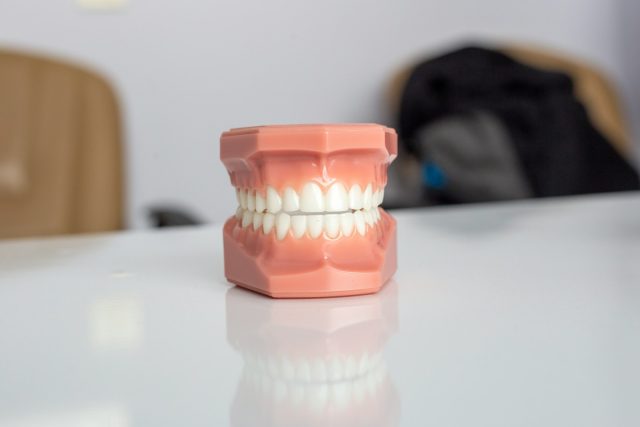Table of Contents
- Why Timing Matters in Wisdom Tooth Extraction
- Preparing for Your Wisdom Teeth Extraction
- Sedation Options for Wisdom Teeth Removal
- What Happens During Third Molar Removal
- Essential Aftercare Tips for Wisdom Teeth Removal Recovery
- Selecting a Trusted Specialist for Third Molar Removal
- Building Confidence in Your Post-Extraction Journey
Why Timing Matters in Wisdom Tooth Extraction
The ideal time to remove wisdom teeth often falls between the late and early twenties. At this age, jawbones are less dense, roots may not fully develop, and healing is most predictable. Waiting too long for removal raises the chance that wisdom teeth will cause problems. Crowding, impaction, and infection become more likely as the teeth mature and the jaw hardens.
Orthodontic plans also play a role. Untreated wisdom teeth can undo the results of braces or create bite misalignment. Dentists and oral surgeons weigh factors like dental crowding, the presence of symptoms, and imaging results before recommending extraction. Delaying removal increases surgical difficulty, pain, and the risk for complications such as cysts or nerve injury.
Preparing for Your Wisdom Teeth Extraction
Preparation starts with thorough planning. Medical history helps the team spot allergies, bleeding issues, or other risks. X-rays and sometimes 3D scans show tooth position, nerve location, and bone structure. Many procedures require fasting—avoid food and drink for 6–8 hours before surgery, unless told otherwise.
Preparation Checklist:
- Review all medications and supplements with the provider
- Confirm fasting instructions
- Arrange a ride home, if sedation is planned
Mental readiness matters too. Dental anxiety is common. Deep breathing, muscle relaxation, or guided imagery techniques can lower stress. Some people find focusing on slow, even breaths helpful. Visualization—picturing a calm place—also works well.
Sedation Options for Wisdom Teeth Removal
Sedation makes the process smoother for both patient and surgeon. Anesthesia choices depend on anxiety levels, medical history, and procedure complexity.
Type |
Onset |
Depth |
Typical Use Cases |
Recovery Time |
Cost |
Local anesthesia |
Minutes |
Numbs area |
Single tooth, mild anxiety |
Short |
Low |
IV sedation |
1–5 min |
Drowsy/sleepy |
Multiple teeth, moderate anxiety |
1–2 hours |
Moderate |
General anesthesia |
<1 min |
Fully asleep |
Severe anxiety, complex cases |
Longer |
High |
Local anesthesia blocks pain at the surgical site, but patients remain awake. IV sedation induces drowsiness, often with little recall of the event. General anesthesia (performed in a hospital or specialized clinic) puts patients fully asleep and is reserved for those with high anxiety, complex impactions, or medical needs.
Patient safety is the top concern. Anesthesia providers follow strict dosage, oxygen monitoring, and emergency readiness standards. Before surgery, the care team explains options, answers questions, and reviews consent forms to ensure patients understand the risks and benefits.
What Happens During Third Molar Removal
Surgical removal of wisdom teeth follows a stepwise approach:
- Numbing or sedation begins.
- The surgeon makes a small gum incision to access the hidden tooth.
- Bone blocking the tooth may be trimmed.
- The tooth could be divided into sections for easier removal.
- After extraction, the area is cleaned and sutured closed.
With proper anesthesia, patients feel pressure and movement but not sharp pain. Pulling, tugging, and vibrations are common, but the team checks often for comfort. Surgeons and support staff monitor vital signs and respond quickly to patient needs throughout.
Essential Aftercare Tips for Wisdom Teeth Removal Recovery
Recovery brings the best results when patients follow detailed aftercare instructions. The first day, stick to clear fluids and cold, soft foods. Gradually introduce room-temperature and soft foods like mashed potatoes, scrambled eggs, or yogurt as swelling decreases.
Sample Recovery Timeline Table:
Days Post-Op |
Diet Suggestions |
Care Steps |
0–1 |
Ice water, clear broth |
Ice pack 20-min intervals |
2–3 |
Applesauce, pudding, eggs |
Gentle saltwater rinses |
3–7 |
Pasta, rice, mashed veggies |
Continue soft brushing |
General guidelines:
- Use ice packs as directed (usually 15–20 minutes per hour)
- Limit activity and rest with head elevated
- Avoid sucking, spitting, or straws to prevent dry socket
Gentle saltwater rinses starting 24 hours after surgery keep the wound clean. Suture care instructions may vary; some stitches dissolve, while others require removal.
Monitor for signs of trouble: intense pain after day three, foul taste, persistent swelling, or fever. These may indicate dry socket or infection. Over-the-counter pain relievers like ibuprofen manage mild discomfort. Severe pain or bleeding warrants a call to the surgeon.
Selecting a Trusted Specialist for Third Molar Removal
Choosing the right provider impacts safety and results. Look for board-certified oral surgeons with strong training and proven experience in extracting impacted teeth. Check complication rates and confirm up-to-date credentials, especially for sedation licenses.
Clear pricing, detailed written aftercare, and easy access for follow-up questions signal a patient-focused practice. The choice of specialist plays a part in smooth recovery and lower risk.
For those researching specialists, wisdom teeth removal Las Vegas NV offers information on experienced providers.
Building Confidence in Your Post-Extraction Journey
Thoughtful timing, careful preparation, clear anesthesia choices, and attentive aftercare all shape a smoother recovery. Trust builds when patients know what to expect and feel comfortable asking questions at every stage. Scheduling a consultation prepares for a confident procedure and recovery.
Progress can feel slow, but each small step brings healing. Better days—eating, talking, and smiling without pain—often arrive sooner than expected with the right support.
